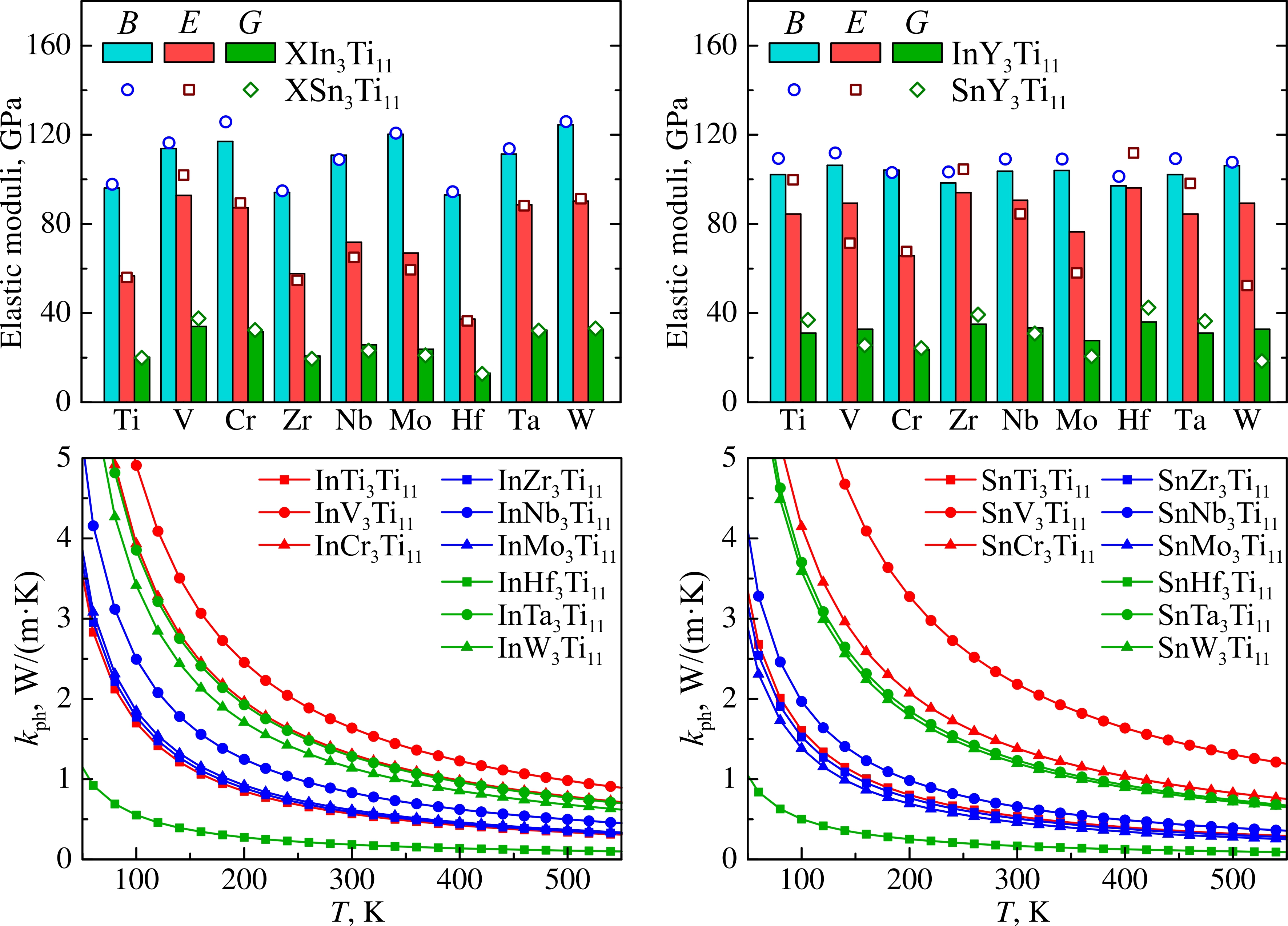Nanosystems: Phys. Chem. Math., 2025, 16 (2), 225–234
Elastic and thermal properties of some ternary β-Ti based alloys
Sergey O. Kasparyan – Institute of Strength Physics and Materials Science of the Siberian Branch of the Russian Academy of Sciences, Tomsk; National Research Tomsk State University, Tomsk, Russia; ks-ftf-isopams@mail.ru
Adil E. Ordabaev – National Research Tomsk State University, Tomsk, Russia; adil.ordabaev04@gmail.com
Alexander V. Bakulin – Institute of Strength Physics and Materials Science of the Siberian Branch of the Russian Academy of Sciences, Tomsk, Russia; bakulin@ispms.ru
Svetlana E. Kulkova – Institute of Strength Physics and Materials Science of the Siberian Branch of the Russian Academy of Sciences, Tomsk, Russia; kulkova@ispms.ru
Corresponding author: Sergey O. Kasparyan, ks-ftf-isopams@mail.ru
PACS 62.20.-x, 62.20.de, 72.15.Eb
DOI 10.17586/2220-8054-2025-16-2-225-234
ABSTRACT The elastic moduli and some thermal properties of four series of ternary β-Ti based alloys of the XY3Ti11 composition, where X and Y are elements of IVB–VIB, IIIA and IVA groups, have been studied using the projector augmented wave method within the density functional theory. It has been shown that the calculated Young’s moduli in these series of alloys are lower than those in commercially pure α-Ti titanium or in the Ti-6Al-4V alloy. With an increase in the concentration of s, p-elements and the number of electrons in the d-band of the X-metal, the Young’s modulus tends to decrease. The variation of Debye temperature, acoustic Grüneisen parameter and thermal conductivity in titanium alloy series is discussed. It is shown that high thermal conductivity correlates with high Debye temperature, which in turn increases with increase of the values of the Young’s modulus.
KEYWORDS titanium alloys, elastic moduli, thermal conductivity, the ab-initio calculations
ACKNOWLEDGEMENTS The work was performed according to the Government research assignment for ISPMS SB RAS, project FWRW-2022-0001. Numerical calculations were performed using the SKIF Cyberia super-computer at Tomsk State University.
FOR CITATION Kasparyan S.O., Ordabaev A.E., Bakulin A.V., Kulkova S.E. Elastic and thermal properties of some ternary β-Ti based alloys. Nanosystems: Phys. Chem. Math., 2025, 16 (2), 225–234.
[In Russian] С.О. Каспарян, А.Е. Ордабаев, А.В. Бакулин, С.Е. Кулькова
Упругие и тепловые свойства ряда тройных сплавов на основе β-Ti
АННОТАЦИЯ Методом проекционных присоединенных волн в рамках теории функционала плотности проведено изучение упругих модулей и ряда тепловых свойств четырех серий тройных сплавов на основе β-Ti состава XY3Ti11, где Х и Y – элементы IVB–VIB, IIIA и IVA групп. Показано, что в данных сериях сплавов рассчитанные модули Юнга меньше, чем в чистом техническом α-Ti титане или в сплаве Ti-6Al-4V. С увеличением концентрации s,p-элементов и числа электронов на d-оболочке Х-металла модуль Юнга демонстрирует тенденцию к понижению. Обсуждается изменение температуры Дебая, акустического параметра Грюнайзена, а также теплопроводности в рядах титановых сплавах. Показано, что высокая теплопроводность коррелирует с высокими значениями температуры Дебая, которая, в свою очередь, увеличивается с ростом значений модуля Юнга.
КЛЮЧЕВЫЕ СЛОВА Сплавы титана, упругие модули, теплопроводность, ab-initio расчеты



